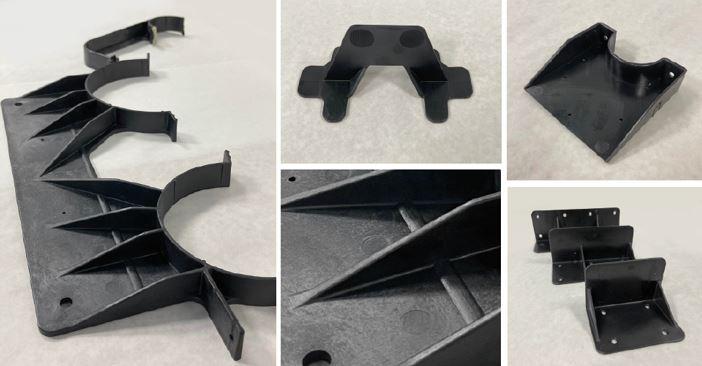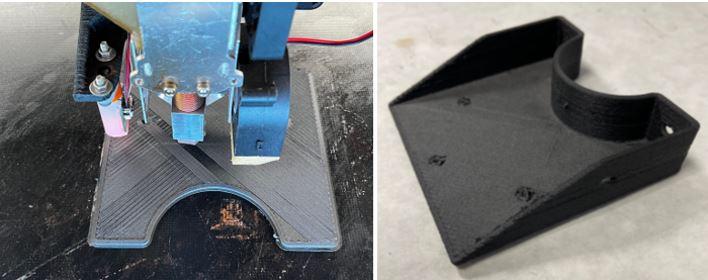Demonstrating the technical,
environmental, and economic feasibility of manufacturing high value-added
aircraft structural parts is the main objective of the ECO-CLIP project. To
achieve this goal, ECO-CLIP focuses its research on the replacement of
classical clip and bracket manufacturing processes with cost-effective and
easy-to-implement processes that enable near-net-shape manufacturing, such as
injection moulding and 3D printing.
After months of research, the
ECO-CLIP project continues to achieve technical milestones. Recently, Aitiip
technology center, member of the ECO-CLIP’s consortium, has made progress in
the injection process, after concluding the previous stage of redesigning the
parts (frame clips and system brackets) to adapt them to this injection. It
should be remembered that the objective of ECO-CLIP is to replace those aeronautic
parts, now made of metal, with thermoplastic material.
In recent months, Aitiip has
focused its efforts on the manufacture of modular molds. Thanks to these molds,
it is possible to reduce the necessary investment to produce different
demonstrators in injection molding, as it is possible to manufacture different
pieces with only a small structural modification of the mold.
Once the design of the part and
the mold had been fulfilled, Aitiip team began the injection phase. In this
process, Aitiip has worked with the material developed by ECO-CLIP coordinator,
AIMEN Technology Center, based on 40% CF / recycled PAEK, obtained from
industrial waste and factory scraps from other processes. The manufactured
parts are currently under evaluation by GKN FOKKER and will be applied in the
STUNNING Multi-Functional Fuselage Demonstrator.

In the other side, AIMEN has also manufactured one of the bracket
geometries to validate the emerging FGF (Fused Granulated Fabrication) additive
manufacturing technology. This manufacturing system provides a fast and
cost-effective solution for small production runs or prototypes.

The fused granulated fabrication technique has been able the use the same
material as the one involved in injection molding. In contraposition to the
typically used FFF, which implies the development of high carbon fiber load
filament that usually represents a huge problem, this technique used pellet
extrusion to create layer-by-layer geometries, avoiding the decrease of carbon
fiber for 3D printing and continuing with high recycled material ratio.
For this aim, a destock printer has been modified within the project
framework to fulfill the necessities of this kind of high-performance materials
process by direct extrusion fabrication.
In addition, ECO-CLIP is
developing at AIMEN facilities an ultrasonic welding procedure for the newly
developed material to join the clips to the aircraft structure, thus avoiding
the need for mechanical joints, and allowing the reduction of both, costs, and
environmental impact.